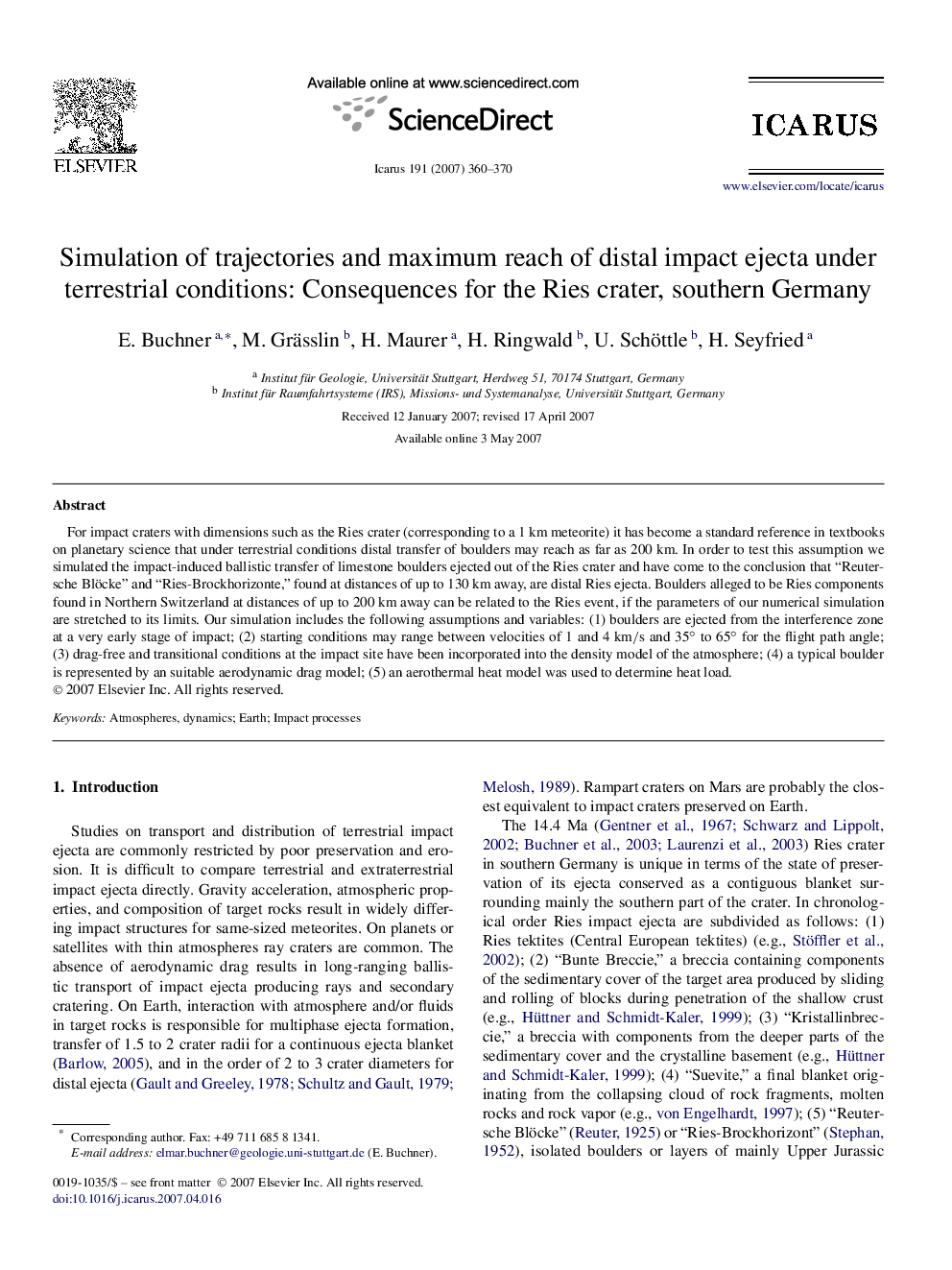| Article ID | Journal | Published Year | Pages | File Type |
|---|---|---|---|---|
| 1775223 | Icarus | 2007 | 11 Pages |
For impact craters with dimensions such as the Ries crater (corresponding to a 1 km meteorite) it has become a standard reference in textbooks on planetary science that under terrestrial conditions distal transfer of boulders may reach as far as 200 km. In order to test this assumption we simulated the impact-induced ballistic transfer of limestone boulders ejected out of the Ries crater and have come to the conclusion that “Reutersche Blöcke” and “Ries-Brockhorizonte,” found at distances of up to 130 km away, are distal Ries ejecta. Boulders alleged to be Ries components found in Northern Switzerland at distances of up to 200 km away can be related to the Ries event, if the parameters of our numerical simulation are stretched to its limits. Our simulation includes the following assumptions and variables: (1) boulders are ejected from the interference zone at a very early stage of impact; (2) starting conditions may range between velocities of 1 and 4 km/s and 35° to 65° for the flight path angle; (3) drag-free and transitional conditions at the impact site have been incorporated into the density model of the atmosphere; (4) a typical boulder is represented by an suitable aerodynamic drag model; (5) an aerothermal heat model was used to determine heat load.
